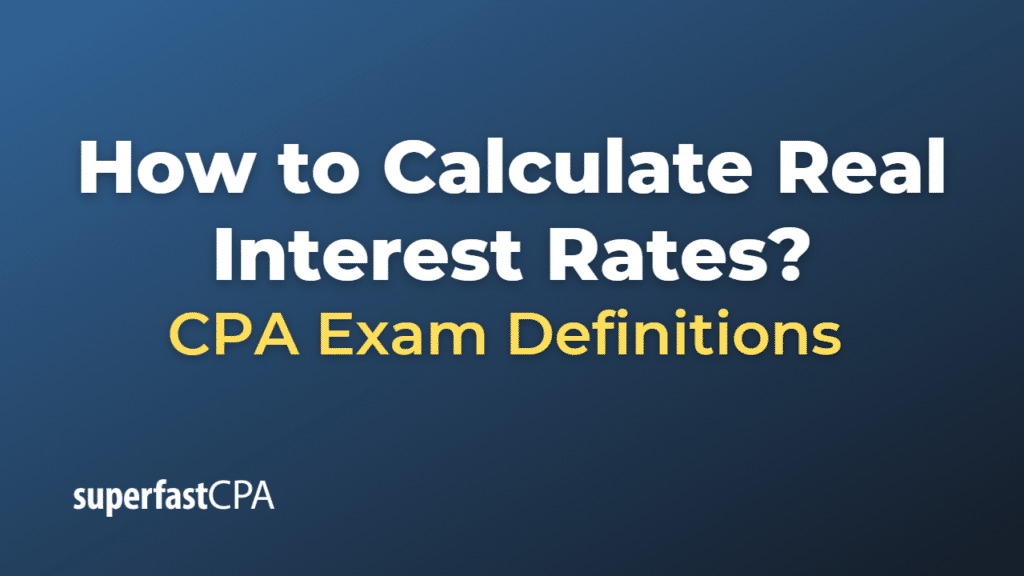How to Calculate Real Interest Rates
The real interest rate is the rate of interest an investor, saver or lender receives (or expects to receive) after allowing for inflation. It can be calculated by adjusting the nominal interest rate, which is the rate before inflation is taken into account, to remove the effects of inflation.
The formula to calculate the real interest rate is:
Real Interest Rate = [(1 + Nominal Rate) / (1 + Inflation Rate)] – 1
This formula comes from the Fisher equation, which describes the relationship between real and nominal interest rates. Note that the rates in the formula should be expressed in decimal form (e.g., 5% is 0.05).
Example of How to Calculate Real Interest Rates
Let’s say you have a savings account that offers a nominal interest rate of 5% per year. The current annual inflation rate is 2%.
To calculate the real interest rate, we use the formula:
Real Interest Rate = [(1 + Nominal Rate) / (1 + Inflation Rate)] – 1
Substitute the given rates into the formula, remembering to convert them into decimal form:
Real Interest Rate = [(1 + 0.05) / (1 + 0.02)] – 1
Solving that gives:
Real Interest Rate = 1.05 / 1.02 – 1
= 0.0294 or 2.94% when expressed as a percentage.
So, when inflation is taken into account, the real return on your savings is about 2.94% per year. This means that although the nominal interest rate on your account is 5%, after adjusting for inflation, the purchasing power of your money is only increasing by approximately 2.94% per year. This gives a clearer picture of the actual earning power of your investment.









